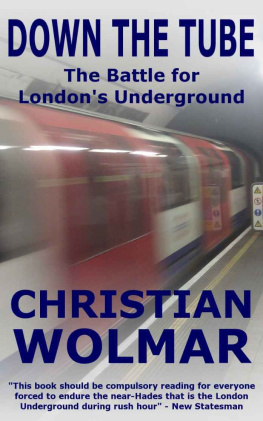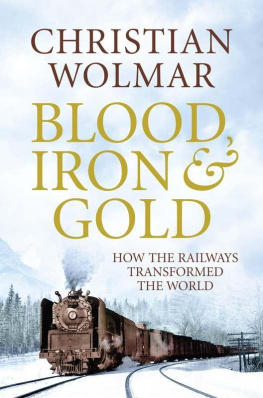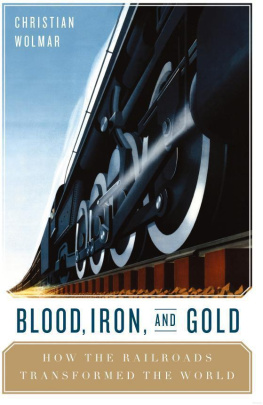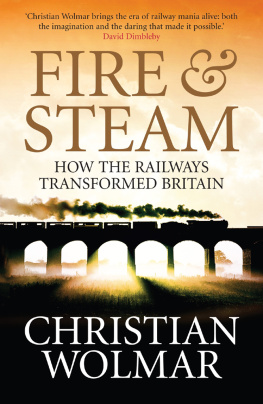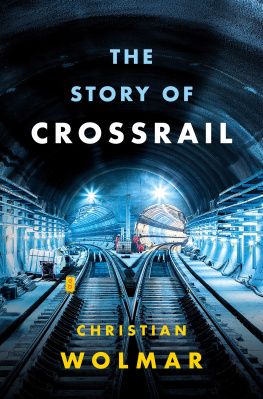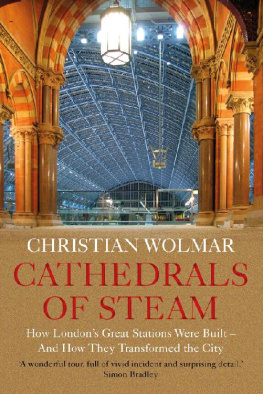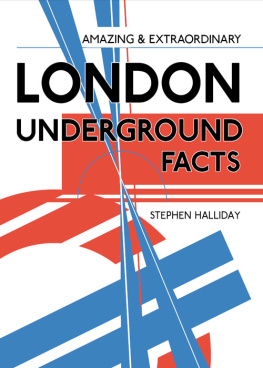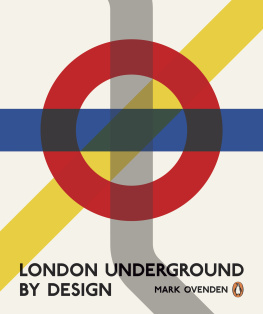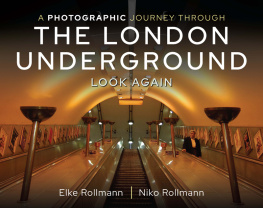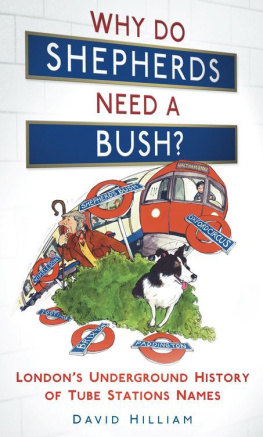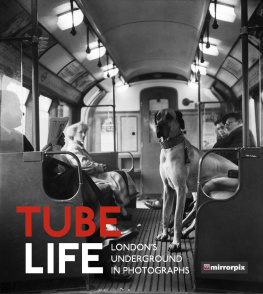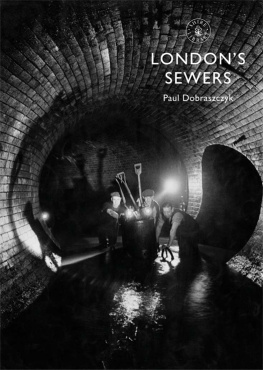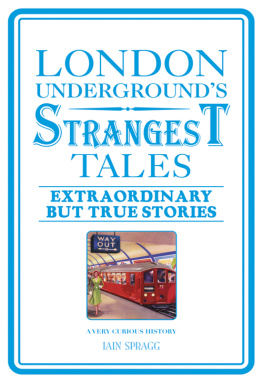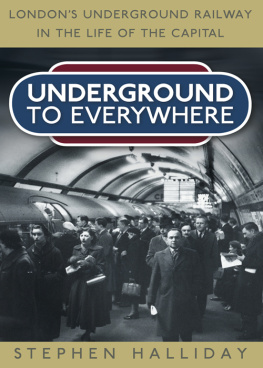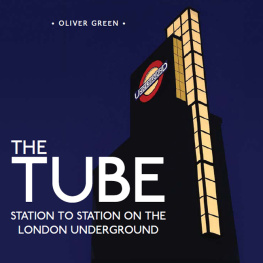Christian Wolmar - Down the Tube: The Battle for Londons Underground
Here you can read online Christian Wolmar - Down the Tube: The Battle for Londons Underground full text of the book (entire story) in english for free. Download pdf and epub, get meaning, cover and reviews about this ebook. year: 2011, publisher: Kemsing Publishing, genre: Politics. Description of the work, (preface) as well as reviews are available. Best literature library LitArk.com created for fans of good reading and offers a wide selection of genres:
Romance novel
Science fiction
Adventure
Detective
Science
History
Home and family
Prose
Art
Politics
Computer
Non-fiction
Religion
Business
Children
Humor
Choose a favorite category and find really read worthwhile books. Enjoy immersion in the world of imagination, feel the emotions of the characters or learn something new for yourself, make an fascinating discovery.
- Book:Down the Tube: The Battle for Londons Underground
- Author:
- Publisher:Kemsing Publishing
- Genre:
- Year:2011
- Rating:3 / 5
- Favourites:Add to favourites
- Your mark:
Down the Tube: The Battle for Londons Underground: summary, description and annotation
We offer to read an annotation, description, summary or preface (depends on what the author of the book "Down the Tube: The Battle for Londons Underground" wrote himself). If you haven't found the necessary information about the book — write in the comments, we will try to find it.
Strikes and the threat of strikes, breakdowns, signal failures, crumbling infrastructure and rising crime for every Londoner, and many commuters, too, the disastrous condition of Londons underground system is a daily reminder of the political and managerial failures that brought a critical public service to the verge of collapse.
Down The Tube explains why and how Londons once world-beating Underground network reached this state and who was responsible.
In 2010, without fanfare or much publicity, the Public Private Partnership for the London Underground was quietly laid to rest. What had been touted as a 30 billion, 30-year scheme to revamp the Tube quietly collapsed when first one contractor, Metronet, and then the second,Tube Lines, pulled out of the deal. It had survived barely seven years, rather than 30.
This book, originally written in 2002 , sets out the intrigues, political machinations and private sector influence that led to the creation of the disastrous scheme.
After winning the 1997 election, Tony Blairs New Labour realised that the Underground desperately needed refurbishment. However, under their self-imposed spending constraints, there was no money available and privatisation, the Tories idea, was ruled out. The Public Private Partnership was the solution chosen by then chancellor Gordon Brown. Originally supposed to be entirely financed by the private sector, it ended up costing 1 billion per year of taxpayers money and proved an extremely expensive way of carrying out improvements on the Tube.
The books conclusions include the startling facts that the PPP:
Cost at least 400m million simply to set up
Involved 135 volumes and 28,000 pages of contracts
Failed to gaurantee the Tube the stable, long-term funding that was originally its principal attraction
Passed the value for money test obligatory for all PFI schemes only with the help of transparent financial sophistries
Depended for its operation on contracts of Byzantine complexity
Split up a unified system with consequent increases in management costs and greater risks to safety
Transferred little financial risk to the private sector
In giving a blow-by-blow account of the process by which the Labour Government foisted this ill-concieved scheme on a reluctant capital, Christian Wolmar reveals many hitherto unpublished aspects of the negiotiations, including first-hand accounts by many of the principal participants, and shows why the PPP failed.
This book is an important summary of a disastrous policy which cost the taxpayer billions and delivered very little of what was promised. By examining the intricacies of the deal and analysing the convoluted process that led to such an expensive mistake, Christian Wolmars book has enormous relevance today. It highlights the fact that complex deals like the Underground PPP, unfathomable to most people, are not necessarily either the best way of building or maintaining infrastructure, nor good value for taxpayers. This is an intriguing tale which, at times, beggars belief given the arrogance and overconfidence of the schemes creators.
Down The Tube focuses, too, on the role of Gordon Brown, whose stubborness in the face of advice from experts and stakeholders, was responsible for pushing the PPP through despite almost unanimous evidence that it was unworkable.
Christian Wolmar is a writer and broadcaster, and the author of On the Wrong Line: How Ideology and Incompetence Wrecked Britains Railways, and a series of history books on the railways including Fire & Steam, a new history of the railways in Britain.
REVIEWS
This book should be compulsory reading for everyone forced to endure the near-Hades that is the London Underground during rush hour.
New Statesman
**
ReviewFor every Londoner, the disastrous condition of Londons underground system is a daily reminder of the political and managerial failures that have brought a public service to near collapse. Here is the full story from author of Broken Rails, Christian Wolmar.
About the AuthorChristian Wolmar is a writer and broadcaster specialising in transport and other social policy issues. He writes a fortnightly column in Rail magazine, contributes regularly to the Independent, the Independent on Sunday, the Evening Standard, the New Statesman and Public Finance. He also appears frequently on radio and television. His previous books include The Great Railway Disaster, Stagecoach, Forgotten Children and Broken Rails: How Privatisation Wrecked Britains Railways.
Christian Wolmar: author's other books
Who wrote Down the Tube: The Battle for Londons Underground? Find out the surname, the name of the author of the book and a list of all author's works by series.

